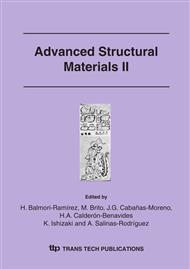p.93
p.99
p.105
p.111
p.117
p.123
p.129
p.135
p.141
High Temperature Chemical Interaction Between SiO2 Substrates and Ag-Cu Based Liquid Alloys in Vacuo
Abstract:
The interfaces formed between vitreous or thermally devitrified fused quartz substrates and silver alloys after 90 min at 850 °C in vacuum have been characterized. Three silver alloys have been used: Cusil (Ag–28 wt % Cu), Cusil-ABA (Ag–35 wt % Cu–1.5 wt % Ti), and Incusil-ABA (Ag–27 wt % Cu–12 wt % In–2 wt % Ti). A non wetting condition is found for the Cusil alloy in both substrates. In contrast, the formation of Ti5Si3, Cu3Ti3O and Ti2O3, following the sequence SiO2 → Ti2O3 → Ti5Si3 → Cu3Ti3O, is observed at the metal/ceramic interface for the two titaniumcontaining alloys on both substrates. Ti2O3 is commonly found as small particles dispersed in a silver-rich matrix. During the experiments, the reaction product layers detach from the ceramic surface and float away from the ceramic/metal interface due to their relatively low density with respect to the liquid alloy. The formation of the phases detected at the ceramic/metal interface can be explained in terms of their relative thermodynamic stability.
Info:
Periodical:
Pages:
117-122
Citation:
Online since:
March 2006
Keywords:
Price:
Сopyright:
© 2006 Trans Tech Publications Ltd. All Rights Reserved
Share:
Citation:


